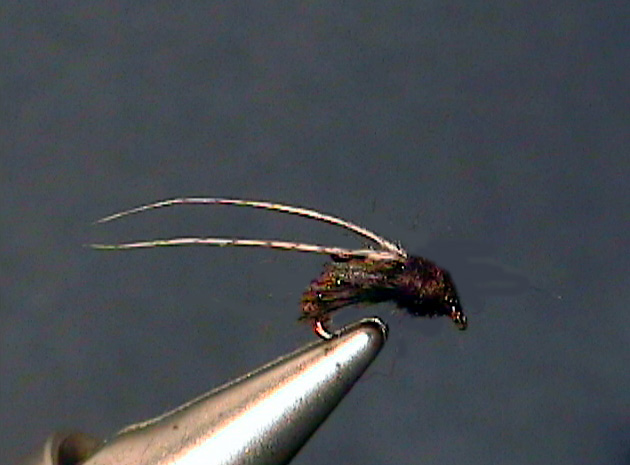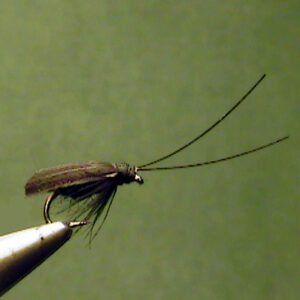Hook Size: 16
The Perfect Fly Black Dancer Caddis Pupa trout fly imitates the Black Dancer Caddis larva stage of life. Their larvae live in a case type shelter until the pupa is formed just prior to the hatch. Just prior to the hatch, the pupa comes out of its case and accents from the bottom of the stream to the surface where it emerges into an adult. This makes them easy prey for trout. They should be fished from the bottom to the surface of the water by first allowing the fly to sink to the bottom and then bringing the fly up to the surface using the current and the tip of the rod.
Larva:
These caddisflies belong to the Leptoceridae family. It is the Mystacides alafimbriata. As
mentioned, it is a long-horned caddisfly which helps identify it in the adult stage. It builds
a case that is long and has sticks usually attached to it. It is built to apparently protect it
from being eaten by trout, or at least most anglers think that is why. We do not provide
an imitation of it because we do feel few, if any, are eaten by trout.
Pupa:
These caddisflies hatch in the mornings, anywhere from 8:00 to 10:00 AM. The can start
hatching as early as June in some western streams, but it is usually late July to August,
during a time when few other insects are hatching. They emerge mid-stream.
Presentation:
The caddisfly emerges in calm, slow moving water and in lakes, in still water. In streams
with slow moving, smooth water, you usually want to make a down and across
presentation, mend the line once or twice and then allow the “Perfect Fly” Pupa to swing
around to the downstream position. Stop the rod tip and allow the fly to slowly rise to the
surface. Most takes occur at this point in the drift. Repeat the cast moving a few feet to
the left or right of the previous one, or a step or two downstream. If you see any of the
newly hatched adults on the water, that is the area you want to place your fly in.
In still water, you want to make a good, long cast into the area where you either see
newly hatched adults on the water, or where you know they have previously hatched.
Allow the fly to sink to the bottom by adding some weight a few inches above the fly.
When it is on the bottom, slowly bring it back to the surface using the rod tip.
Copyright 2013 James Marsh

